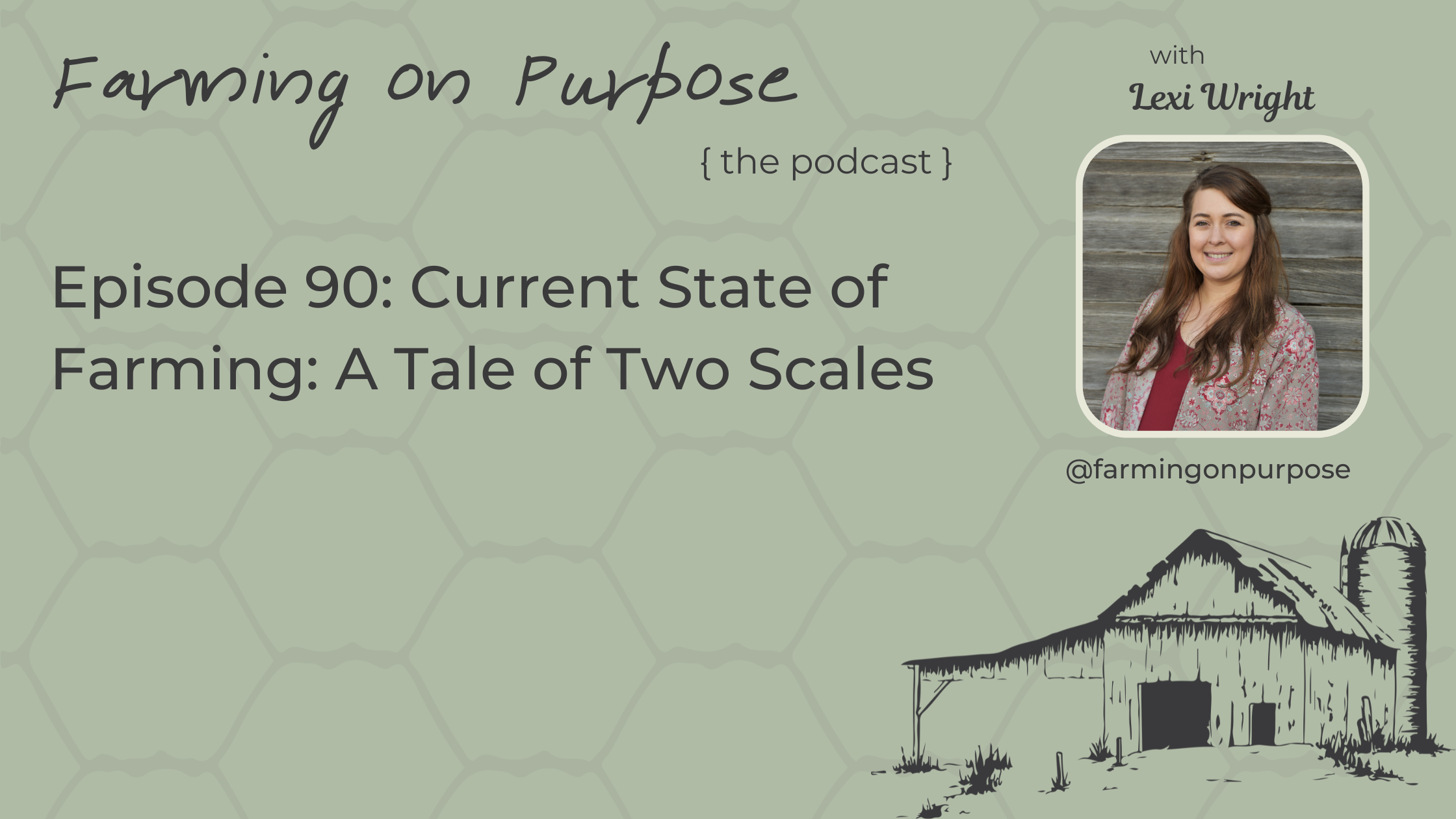#90 - Current State of Farming: A Tale of Two Scales
“This idea of how all the different sizes of farms co-exist in agriculture today is one of the biggest problems that we have the opportunity to solve.”
I often find myself thinking about the future of agriculture and where family farms fit into the bigger picture. With fewer small farms and more large operations, it's a topic that's close to my heart and crucial for our industry.
The Numbers Tell a Story
Let's look at some eye-opening facts:
In 2023, there were 1.9 million farms in the U.S., down from 2.2 million in 2007.
In 2022, farms of all sizes decreased except for those with 5,000 acres or more.
Half of all farms had less than $10,000 in sales, and 81% had less than $100,000 in sales.
Family farms made up 97% of all farms in the U.S.
These numbers paint a picture of an industry that's changing fast. Even more so when you look at the production from each size class of farm.
Small family farms (making less than $350,000 a year) produce 18% of the total value but account for most of the hay and nearly half of the poultry and eggs.
Mid-sized family farms ($350,000 to $1 million) produce 19% of the total value.
Large-scale family farms (over $1 million) produce 52% of the total value and lead in most major crops.
The Reality Behind the Numbers
When we say 97% of farms are family-owned, it sounds great. But the truth is, most of these farms aren't making enough to support a family on their own. This isn't the picture most of us grew up with or learned about in 4-H and FFA.
As a mom and a farmer, I worry about what this means for our kids and the future of farming. We're treating farms of all sizes the same way, with the same rules and markets. But is that smart?
Finding a Way Forward
So, what can we do? Let's dive deeper into some solutions:
Be open to new perspectives: We need fresh ideas from both inside and outside farming. Let's welcome new voices and be willing to learn. This might mean partnering with tech companies to develop farm-specific apps or working with local chefs to create value-added products.
Rethink diversification: Instead of stretching ourselves thin with many products, let's focus on doing one or two things really well. Then, we can add related services or products to that niche. For example, if you're great at raising grass-fed beef, consider offering farm tours or beef cooking classes. Or partner with a local brewery to use your grain in specialty beers.
Collaborate in new ways: Co-ops have always been important in farming. Now, we need to think about new ways to work together, especially in food processing and marketing. This could mean forming a group of small farms to jointly invest in processing equipment or creating a shared brand for local products. Online farmers' markets or community-supported agriculture programs can also help small farms reach more customers.
Embrace direct-to-consumer marketing: Use social media and e-commerce platforms to tell your farm's story and sell directly to customers. This cuts out middlemen and allows you to capture more of the food dollar.
Explore agritourism: Turn your farm into a destination. Offer pick-your-own produce, farm stays, or educational workshops. This not only provides additional income but also helps create a connection between consumers and where their food comes from.
Invest in sustainable practices: Implement regenerative agriculture techniques or consider organic certification. These practices can lead to premium prices for your products and appeal to environmentally conscious consumers.
Seek out niche markets: Identify unique products or services that larger farms might overlook. This could be heritage breed livestock, heirloom vegetables, or specialty crops for local ethnic markets.
A Pivotal Moment
In the next 15-20 years, up to 70% of farmland will change hands. This is huge! It's a chance for real change if we insist on it. I believe we need to push for stronger farms, stronger families, and a stronger food system. We need to be stubborn about our values but open to new ideas.
This fall, I'll be sharing stories from farmers and ranchers who are making it work. They'll talk about their successes, challenges, and how they're building a future in farming.
Let's work together to create an agriculture industry that supports our families, feeds our communities, and gives our kids a chance to carry on this vital role. The future of family farming depends on it.
More from Farming on Purpose
If you are interested in signing up for the Marketing Routine class, do so here!
If you would like to support the podcast or be a part of the conversation join the Farming On Purpose Facebook group and visit the Farming on Purpose merch page.
Visit ThriveCart - I may earn affiliate commissions from links on this page.
You may also enjoy…
#12 Beginning Farming and Resetting Your Farm Practices with DL Lautenbach
#45 Diversifying the Ranch with Jess at Perigo Hay and Cattle
#62 Your Life's Bingo Card and Flower Farming with Liz Fiedler of Sunny Mary Meadow Farms
About the Host of Farming On Purpose, Lexi Wright:
I’m your host, Lexi Wright. I started the Farming on Purpose Podcast from a passion for sharing the future of production agriculture.
I’m so glad you’re here and I hope you’ll take a moment to join the conversation with me and other listeners on social media.


